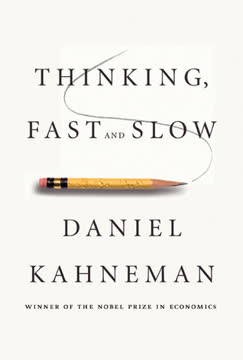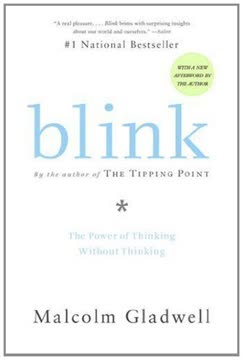النقاط الرئيسية
1. يمتلك الانطوائيون قوى فريدة في عالم يفضل الانبساطية
نميل إلى اعتبار المتحدثين أكثر ذكاءً من الهادئين، رغم أن معدلات الدرجات ونتائج اختبارات الذكاء تكشف أن هذا الاعتقاد غير دقيق.
غالبًا ما تُغفل نقاط قوة الانطوائيين. بالرغم من التحيز المجتمعي لصالح الانبساطية، يمتلك الانطوائيون صفات ثمينة مثل التفكير العميق، التحليل الدقيق، وحل المشكلات بإبداع. هذه الصفات تجعلهم مناسبين لأدوار تتطلب تركيزًا وابتكارًا واتخاذ قرارات مدروسة.
الأبحاث تنفي المفاهيم الخاطئة الشائعة. تظهر الدراسات أن الانطوائيين يتفوقون أحيانًا على الانبساطيين في المجالات الأكاديمية وبعض المهن. قدرتهم على التركيز العميق، والعمل المستقل، ومعالجة المعلومات بدقة تساهم في نجاحهم. كما يميلون إلى الوعي بالمخاطر والضمير الحي، مما يؤدي إلى اتخاذ قرارات متوازنة في سياقات مختلفة.
2. صعود "المثل الأعلى للانبساطية" شكّل الثقافة الغربية الحديثة
الانطوائية – إلى جانب صفات مثل الحساسية، الجدية، والخجل – أصبحت الآن صفة شخصية من الدرجة الثانية، بين خيبة الأمل والمرض النفسي.
تحول تاريخي في القيم الثقافية. شهد أوائل القرن العشرين انتقالًا من "ثقافة الشخصية الأخلاقية" إلى "ثقافة الشخصية الاجتماعية". هذا التغيير ركز على الكاريزما، الاجتماعية، والحزم بدلاً من التأمل والفضيلة الأخلاقية.
عواقب المثل الأعلى للانبساطية. أدى هذا التحول الثقافي إلى:
- المبالغة في تقدير الصفات المرتبطة بالانبساطية في مختلف المجالات
- الضغط على الانطوائيين للامتثال للمعايير الانبساطية
- سوء الفهم لقدرات وإمكانات الأفراد الانطوائيين
- تصميم بيئات التعليم والعمل التي تلائم أنماط الانبساطيين بشكل أساسي
3. التعاون قد يعيق الإبداع والإنتاجية لدى الانطوائيين
إذا كنت معلمًا، استمتع بطلابك الاجتماعيين والمشاركين. لكن لا تنسَ أن تعزز الخجولين، اللطفاء، المستقلين، الذين لديهم شغف موجه نحو مجموعات الكيمياء أو تصنيف الببغاوات أو فن القرن التاسع عشر. فهم فنانو ومهندسو ومفكرو الغد.
الوحدة تعزز الابتكار. كثير من الأفكار والاختراعات الرائدة جاءت من انطوائيين يعملون بمفردهم. القدرة على التركيز العميق دون انقطاع تسمح باستكشاف أعمق للمشكلات المعقدة وحلول إبداعية.
سلبيات التعاون المفرط:
- التفكير الجماعي قد يخنق الإبداع الفردي
- التكاسل الاجتماعي في المجموعات يقلل الإنتاجية العامة
- التفاعل المستمر قد يكون مرهقًا ذهنيًا للانطوائيين
- المكاتب المفتوحة والعمل الجماعي الإجباري قد يقللان من رضا وأداء الانطوائيين
التوازن هو الأساس. رغم أهمية التعاون، يجب على المؤسسات التعليمية والعملية توفير فرص للعمل الجماعي وأوقات للتركيز الفردي لتعظيم إمكانات جميع الشخصيات.
4. للبيولوجيا دور كبير في تحديد الانطوائية والانبساطية
الأطفال ذوو الاستثارة العالية يشبهون الأوركيد: يذبلون بسهولة، لكن في الظروف المناسبة ينمون قويين ورائعين.
الأساس العصبي للشخصية. تظهر الأبحاث أن الانطوائيين والانبساطيين يختلفون في مستويات الاستثارة العصبية. الانطوائيون أكثر حساسية للتحفيز، لذا يحتاجون إلى مدخلات خارجية أقل ليشعروا باليقظة والانخراط.
العوامل الوراثية:
- دراسات التوائم تشير إلى أن الانطوائية والانبساطية وراثية بنسبة 40-50%
- جينات محددة تتعلق بمعالجة الدوبامين والسيروتونين تؤثر على الصفات الشخصية
- تصوير الدماغ يكشف اختلافات في كيفية معالجة المعلومات والاستجابة للمحفزات بين الانطوائيين والانبساطيين
تفاعل البيئة. رغم الدور الكبير للبيولوجيا، تؤثر التجارب والبيئة في كيفية تعبير الانطوائية أو الانبساطية. "فرضية الأوركيد" تشير إلى أن بعض الأطفال أكثر حساسية للتأثيرات البيئية الإيجابية والسلبية.
5. يمكن للانطوائيين تعلم التكيف والازدهار في بيئات الانبساط
أحيانًا من الأفضل أن نضع أنفسنا داخل مناطق الراحة الخاصة بنا تمامًا.
تطوير استراتيجيات التكيف. يستطيع الانطوائيون تعلم التنقل في البيئات الانبساطية من خلال:
- خلق "مناطق استشفاء" لإعادة الشحن
- ممارسة مهارات العرض الذاتي في التفاعلات الاجتماعية المهمة
- وضع حدود شخصية للمشاركة الاجتماعية لتجنب الإرهاق
- استثمار قوتهم في الاستماع والتواصل الفردي
قوة "نظرية السمة الحرة". تشير هذه النظرية إلى أن الانطوائيين يمكنهم التصرف خارج طبيعتهم من أجل "مشاريع شخصية جوهرية". من خلال تحديد ما يهمهم حقًا، يجدون الدافع للخروج من مناطق الراحة عند الضرورة.
موازنة الأصالة والتكيف. من المهم تطوير المهارات الاجتماعية، لكن من الضروري أيضًا احترام الطبيعة الحقيقية للانطوائيين. إيجاد توازن بين التكيف مع التوقعات الاجتماعية والحفاظ على الصفات الجوهرية يؤدي إلى رضا ونجاح أكبر.
6. القيادة لا تتطلب دائمًا شخصية انبساطية
لا يوجد ارتباط بين كونك أفضل متحدث وامتلاك أفضل الأفكار.
أنماط القيادة الانطوائية. القادة الهادئون يتفوقون غالبًا من خلال:
- الاستماع بعناية لأفكار الفريق
- التفكير المتأني قبل اتخاذ القرارات بدلاً من التسرع
- القيادة بالمثال بدلاً من الكاريزما
- تمكين الآخرين من المبادرة ومشاركة خبراتهم
أمثلة على قادة انطوائيين ناجحين:
- روزا باركس: عزيمتها الهادئة أشعلت حركة الحقوق المدنية
- غاندي: استخدم المقاومة السلمية والقناعة الشخصية لقيادة الهند نحو الاستقلال
- وارن بافيت: معروف بنهجه المدروس في الاستثمار والقيادة
الفعالية حسب الموقف. تظهر الأبحاث أن القادة الانطوائيين قد يكونون أكثر فاعلية من الانبساطيين، خاصة عند إدارة موظفين مبادرين. قدرتهم على التراجع وترك المجال للآخرين للتألق تعزز بيئة عمل تعاونية ومبتكرة.
7. رعاية الأطفال الانطوائيين تتطلب الفهم والقبول
سر الحياة هو وضع نفسك في الإضاءة المناسبة. للبعض ضوء مسرح برودواي؛ وللآخرين مكتب مضاء بمصباح.
التعرف على صفات الانطوائية وتقديرها. يجب على الآباء والمعلمين أن يفهموا أن الانطوائية ليست عيبًا يجب تصحيحه، بل جانب أساسي من الشخصية له نقاط قوة وتحديات خاصة.
استراتيجيات دعم الأطفال الانطوائيين:
- توفير أماكن هادئة للتأمل وإعادة الشحن
- السماح بالتكيف التدريجي مع المواقف الاجتماعية الجديدة
- تشجيع متابعة الاهتمامات العميقة والأنشطة الفردية
- تعليم المهارات الاجتماعية دون الضغط على أن يصبحوا انبساطيين
- الدفاع عن احتياجاتهم في المدرسة والبيئات الاجتماعية
موازنة النمو والقبول. من المهم مساعدة الأطفال على تطوير المهارات الاجتماعية اللازمة، وفي الوقت نفسه تأكيد قيمتهم الذاتية ووجهات نظرهم الفريدة. تشجيع القبول الذاتي يؤدي إلى ثقة ومرونة أكبر.
8. الاختلافات الثقافية تؤثر على تصور الانطوائية والانبساطية
نميل إلى المبالغة في تقدير مدى حاجة القادة لأن يكونوا منفتحين اجتماعيًا.
وجهات نظر غربية مقابل شرقية. الثقافات الغربية غالبًا ما تعطي الأولوية للحزم والتواصل اللفظي، بينما تقدر العديد من الثقافات الشرقية الهدوء والتأمل. هذا الانقسام الثقافي يشكل توقعات السلوك الاجتماعي وأنماط القيادة.
تأثير ذلك على التفاعلات العالمية:
- قد تنشأ سوء تفاهمات بسبب اختلاف معايير التواصل
- قد تتجاهل الشركات الغربية إمكانات الموظفين الانطوائيين من ثقافات أخرى
- يصبح التكيف مع أنماط القيادة والعمل الجماعي متعددة الثقافات أمرًا حيويًا
تغير التصورات. مع زيادة العولمة، يتزايد الاعتراف بقيمة تنوع الشخصيات في السياقات الثقافية المختلفة. هذا التحول يؤدي إلى مقاربات أكثر دقة للشخصية في الأعمال الدولية والتعليم.
9. يتفوق الانطوائيون في بعض المهن وسيناريوهات حل المشكلات
إذا كنت انطوائيًا، فابحث عن تدفقك باستخدام مواهبك. لديك قوة المثابرة، والعزيمة لحل المشكلات المعقدة، والبصيرة لتجنب العقبات التي تعثر الآخرين.
المهن المناسبة للانطوائيين:
- البحث والعلوم
- المهن الإبداعية مثل الكتابة والفن
- التكنولوجيا والهندسة
- الإرشاد والعلاج
- الحرف الماهرة التي تتطلب تركيزًا ودقة
مزايا حل المشكلات:
- القدرة على التركيز العميق لفترات طويلة
- الميل للتفكير قبل التصرف، مما يؤدي إلى تحليل أعمق
- الراحة في العمل الفردي، مما يسمح بتركيز مستمر
- الوعي بالمخاطر، مما يؤدي إلى اتخاذ قرارات متوازنة
الاستفادة من قوى الانطوائيين. يمكن للمؤسسات أن تستفيد من التعرف على أساليب حل المشكلات الفريدة للانطوائيين، خاصة في الأدوار التي تتطلب تحليلاً دقيقًا، وإبداعًا، وتخطيطًا طويل الأمد.
10. التوازن بين الانطوائية والانبساطية يؤدي إلى علاقات وأماكن عمل أفضل
الحب ضروري؛ الاجتماعية اختيارية.
فهم اختلافات الشخصية. الاعتراف باحتياجات وقوى كل من الانطوائيين والانبساطيين واحترامها يؤدي إلى علاقات أكثر انسجامًا وعمل جماعي أكثر فاعلية.
استراتيجيات التوازن:
- خلق بيئات عمل تجمع بين المساحات التعاونية والخاصة
- التفاوض في العلاقات على الأنشطة الاجتماعية ووقت الانفراد
- تشجيع أنماط تواصل متنوعة في الاجتماعات والنقاشات
- تقديم ترتيبات عمل مرنة لتلبية أنماط العمل المختلفة
فوائد التنوع. احتضان مجموعة متنوعة من الشخصيات يؤدي إلى:
- أساليب حل مشكلات أكثر شمولية
- تحسين ديناميكيات الفريق والإبداع
- زيادة رضا الموظفين واحتفاظهم بالعمل
- علاقات شخصية واجتماعية أغنى
من خلال تقدير كل من الانطوائية والانبساطية، نخلق مجتمعًا أكثر شمولية وفعالية يستفيد من قوى جميع أنواع الشخصيات.
آخر تحديث::
FAQ
What's Quiet: The Power of Introverts in a World That Can't Stop Talking about?
- Focus on Introversion: The book explores the value of introverts in a society that often favors extroverted traits. Susan Cain argues that introverts possess unique strengths that contribute significantly to creativity, leadership, and innovation.
- Cultural Critique: Cain critiques the "Extrovert Ideal," which suggests that being outgoing and sociable is the key to success and happiness. She highlights how this cultural bias can marginalize introverts and their contributions.
- Scientific Insights: The book combines personal anecdotes with scientific research on personality psychology, including studies on temperament and the biological basis of introversion and extroversion.
Why should I read Quiet: The Power of Introverts in a World That Can't Stop Talking?
- Empowerment for Introverts: If you identify as an introvert or know someone who does, this book provides validation and empowerment. It helps readers understand that introversion is not a flaw but a valuable trait.
- Understanding Extroverts: The book also offers insights for extroverts, helping them appreciate the strengths of introverts and how to work better together. This can enhance personal and professional relationships.
- Practical Advice: Cain provides practical strategies for navigating a world that often favors extroversion, making it a useful guide for anyone looking to thrive in various social and professional settings.
What are the key takeaways of Quiet: The Power of Introverts in a World That Can't Stop Talking?
- Value of Solitude: Cain emphasizes the importance of solitude for creativity and productivity. She states, “Some of our greatest ideas, art, and inventions … came from quiet and cerebral people.”
- Introverts as Leaders: The book argues that introverts can be effective leaders, often excelling in environments that require deep thinking and careful decision-making. Cain cites examples like Warren Buffett and Eleanor Roosevelt.
- Cultural Shift Needed: Cain calls for a cultural shift to recognize and value introverted traits, suggesting that society would benefit from embracing a wider range of personality types.
What are the best quotes from Quiet: The Power of Introverts in a World That Can't Stop Talking and what do they mean?
- “The Extrovert Ideal has been documented in many studies.” This quote highlights the pervasive belief in society that extroverted traits are superior, which can lead to the undervaluation of introverts.
- “Not only is there really nothing wrong with being quiet, reflective, shy, and introverted, but there are distinct advantages to being this way.” This quote encapsulates the book's core message that introversion is not a deficiency but a strength.
- “The glory of the disposition that stops to consider stimuli rather than rushing to engage with them is its long association with intellectual and artistic achievement.” This emphasizes the idea that introverts often excel in creative fields due to their reflective nature.
How does Susan Cain define introversion in Quiet: The Power of Introverts in a World That Can't Stop Talking?
- Introversion vs. Extroversion: Cain defines introversion as a preference for solitary activities and a tendency to feel drained by social interactions. Extroverts, in contrast, thrive on social engagement and external stimulation.
- Biological Basis: She discusses research indicating that introverts have different brain activity patterns, particularly in areas related to processing stimuli. This biological difference contributes to their unique ways of interacting with the world.
- Cultural Misunderstanding: Cain points out that society often misinterprets introversion as shyness or social anxiety, which can lead to negative stereotypes and misunderstandings about introverted individuals.
What is the "Extrovert Ideal" mentioned in Quiet: The Power of Introverts in a World That Can't Stop Talking?
- Cultural Norm: The "Extrovert Ideal" refers to the societal belief that extroverted traits are the standard for success and happiness. This ideal promotes the idea that being outgoing and sociable is inherently better.
- Impact on Introverts: Cain argues that this ideal marginalizes introverts, leading them to feel pressured to conform to extroverted norms. This can result in introverts feeling undervalued and misunderstood.
- Need for Balance: The book advocates for a more balanced view that recognizes the strengths of both introverts and extroverts, suggesting that society would benefit from embracing diverse personality types.
How does Quiet: The Power of Introverts in a World That Can't Stop Talking address the workplace dynamics for introverts?
- Teamwork vs. Solitude: Cain discusses how modern workplaces often prioritize teamwork and collaboration, which can disadvantage introverts who thrive in solitary environments. She argues that this can stifle creativity and productivity.
- Creating Inclusive Environments: The book offers suggestions for creating work environments that accommodate both introverts and extroverts, such as providing quiet spaces for focused work. This can enhance overall workplace effectiveness.
- Leadership Styles: Cain highlights that introverted leaders can be just as effective as extroverted ones, often excelling in situations that require careful thought and consideration. She provides examples of successful introverted leaders to illustrate this point.
What is the "Orchid Hypothesis" discussed in Quiet: The Power of Introverts in a World That Can't Stop Talking?
- Sensitivity to Environment: The "Orchid Hypothesis" posits that some children, particularly those with high reactivity, are like orchids—sensitive to their environments and more affected by both positive and negative experiences. This contrasts with "dandelion" children, who thrive in various conditions.
- Potential for Greatness: High-reactive children can flourish in nurturing environments, often becoming exceptionally talented and empathetic adults. This suggests that with the right support, they can achieve great things.
- Implications for Parenting: The hypothesis emphasizes the importance of providing a supportive and understanding environment for sensitive children, as their potential can be significantly enhanced by positive experiences.
How does Susan Cain suggest introverts can thrive in an extroverted world in Quiet: The Power of Introverts in a World That Can't Stop Talking?
- Embrace Your Nature: Cain encourages introverts to accept their introversion and recognize it as a strength rather than a weakness. This self-acceptance is crucial for personal and professional success.
- Seek Solitude: She advocates for the importance of solitude in fostering creativity and productivity, suggesting that introverts should carve out time for themselves to recharge and think deeply.
- Communicate Needs: Cain advises introverts to communicate their needs in social and professional settings, such as requesting quiet time or advance notice for speaking engagements. This can help create a more comfortable environment for them.
What role does biology play in introversion and extroversion according to Quiet: The Power of Introverts in a World That Can't Stop Talking?
- Genetic Influences: Cain discusses research indicating that introversion and extroversion have a biological basis, with certain genes linked to these personality traits. This suggests that our temperaments are partly inherited.
- Brain Function Differences: The book highlights differences in brain activity between introverts and extroverts, particularly in areas related to processing stimuli and emotional responses. These differences can influence how each type interacts with the world.
- Long-term Effects: Cain emphasizes that these biological factors can have long-lasting effects on behavior and personality, shaping how individuals respond to their environments throughout their lives.
How does Quiet: The Power of Introverts in a World That Can't Stop Talking relate to the concept of leadership?
- Introverted Leaders: Cain argues that introverts can be highly effective leaders, often excelling in situations that require deep thinking and careful decision-making. She provides examples of successful introverted leaders to support this claim.
- Collaboration and Listening: The book emphasizes the importance of listening and collaboration in leadership, traits that introverts often possess. This can lead to more thoughtful and inclusive decision-making processes.
- Cultural Shift Needed: Cain calls for a cultural shift in how we view leadership, advocating for the recognition of diverse leadership styles that include introverted approaches. This can enhance organizational effectiveness and innovation.
What is the significance of the “Free Trait Theory” in Quiet: The Power of Introverts in a World That Can't Stop Talking?
- Acting Out of Character: Free Trait Theory, introduced by Professor Brian Little, posits that individuals can act out of character for the sake of core personal projects. This means introverts can adopt extroverted behaviors when necessary, especially in meaningful contexts.
- Balancing Authenticity and Adaptation: The theory emphasizes the importance of balancing authenticity with the need to adapt to different situations. Cain suggests that understanding this balance can help individuals thrive in various environments.
- Restorative Niches: Little’s concept of “restorative niches” is crucial for introverts who need to recharge after acting out of character. Cain encourages readers to create these niches to maintain their well-being while engaging in extroverted activities.
مراجعات
كتاب "الصمت: قوة الانطوائيين في عالم لا يتوقف عن الكلام" يلقى صدى واسعًا بين الانطوائيين، حيث يمنحهم تأكيدًا عميقًا ورؤية واضحة لقواهم الكامنة. يقدّم الكاتب كاين في هذا العمل استكشافًا معمقًا لمفهوم المثالية الاجتماعية التي تمجد الانبساطيين، ويُظهر كيف يمكن للانطوائيين أن يزدهروا في ظل هذه البيئة. يعتمد الكتاب على أبحاث علمية موثوقة، وقصص شخصية مؤثرة، إلى جانب نصائح عملية تساعد القارئ على فهم الانطواء واحتضانه. ورغم أن بعض القراء وجدوا في بعض الفصول تكرارًا أو تحيزًا، إلا أن الغالبية اعتبروا الكتاب مصدر إلهام وتمكين حقيقي. يتحدى هذا الكتاب الأعراف الاجتماعية السائدة، ويحث القراء على تقدير المساهمات الفريدة التي يقدمها الانطوائيون في مختلف المجالات.
Similar Books













